A weather update from Will Ulrich, weather officer with the 45th Weather Squadron, reports conditions look good for launch of the Lucy mission.
Author: Amanda Griffin
The Lucy Science Payloads

Lucy will explore the Trojan asteroids with a suite of remote sensing instruments:
- L’Ralph – an instrument provided by NASA’s Goddard Space Flight Center in Greenbelt, Maryland, that consists of two parts:
L’Ralph Linear Etalon Imaging Spectral Array (LEISA), an infrared imaging spectrometer that will reveal the absorption lines that serve as the fingerprints for different silicates, ices and organics that may be on the surface of the Trojan asteroids, and
L’Ralph Multi-spectral Visible Imaging Camera (MVIC), that will take color images of the Trojans to help determine their composition and look for indications of surface activity.
- Lucy Long Range Reconnaissance Imager (L‘LORRI) – a high resolution, panchromatic visible camera made by the Johns Hopkins University Applied Physics Laboratory in Laurel, Maryland. L’LORRI will provide the most detailed images of the surface of the Trojan asteroids.
- Lucy Thermal Emission Spectrometer (L’TES) – an instrument built by Arizona State University in Tempe, Arizona, that will measure the surface temperature of the Trojan asteroids by observing the thermal infrared spectrum, helping to understand the physical properties of the surface material.
Additionally, the navigation cameras will be used to determine the shapes of the Trojan asteroids. The High Gain Antenna will be used to both communicate with Earth and to carry out radio science experiments to measure the masses of the Trojan asteroids. Lucy Radio science is led by a team from the University of Cologne, Germany.
The Lucy Mission – First to the Trojan Asteroids
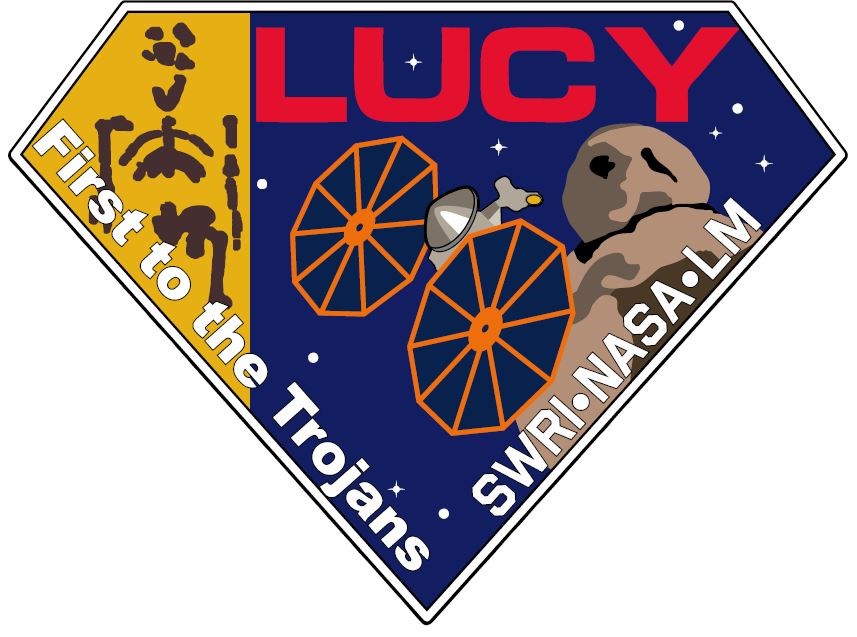 Lucy will explore the Jupiter Trojan asteroids. During its 12-year mission, the spacecraft will explore a record-breaking number of asteroids, flying by one main belt asteroid and seven Trojan asteroids. These small bodies are remnants of our early solar system, now trapped in stable orbits associated with – but not close to – the giant planet Jupiter. The Trojan asteroids are in two “swarms” that lead and follow Jupiter in its orbit around the Sun and are almost as numerous as the objects in the Main Asteroid Belt. Lucy also will circle back to Earth three times for gravity assists, making it the first spacecraft ever to return to the vicinity of Earth from the outer solar system.
Lucy will explore the Jupiter Trojan asteroids. During its 12-year mission, the spacecraft will explore a record-breaking number of asteroids, flying by one main belt asteroid and seven Trojan asteroids. These small bodies are remnants of our early solar system, now trapped in stable orbits associated with – but not close to – the giant planet Jupiter. The Trojan asteroids are in two “swarms” that lead and follow Jupiter in its orbit around the Sun and are almost as numerous as the objects in the Main Asteroid Belt. Lucy also will circle back to Earth three times for gravity assists, making it the first spacecraft ever to return to the vicinity of Earth from the outer solar system.
The Lucy mission is named after the fossilized skeleton of an early hominin, or pre-human ancestor, that was found in Ethiopia in 1974 and named “Lucy,” by the team of paleontologists who discovered it.
Lucy has the following science objectives at each of its destinations:
- Surface Geology – Lucy will map the shape, albedo, and crater spatial and size-frequency distributions; determine the nature of crustal structure and layering; and determine the relative ages of surface units
- Surface Color and Composition – Lucy will map the color, composition and regolith properties of the surface, and determine the distribution of minerals, ices, and organic species
- Interiors and Bulk Properties – Lucy will determine the masses and densities, and study sub-surface composition via excavation by craters, factures, ejecta blankets, and exposed bedding.
- Satellites and Rings – Lucy will look for and study satellites and/or rings that might orbit the targeted Trojan asteroids.
NASA’s Lucy Ready for Launch atop Atlas V Rocket

Good morning, and welcome to launch day for NASA’s Lucy spacecraft. The first space mission to explore a diverse population of small bodies known as the Jupiter Trojan asteroids will launch on a United Launch Alliance Atlas V 401 rocket from Space Launch Complex-41 at Cape Canaveral Space Force Station in Florida. Launch is targeted for 5:34 a.m. EDT, at the beginning of a 75-minute launch window.
The latest weather update from the 45th Weather Squadron remains at a 90 percent chance of favorable weather today for liftoff of the Atlas V rocket with NASA’s Lucy spacecraft.
Today’s launch blog originates from the NASA News Center here at Kennedy Space Center in Florida. Follow the launch countdown and launch at https://www.nasa.gov/nasalive.
Workhorse Rocket to Launch Lucy to Trojan Asteroids
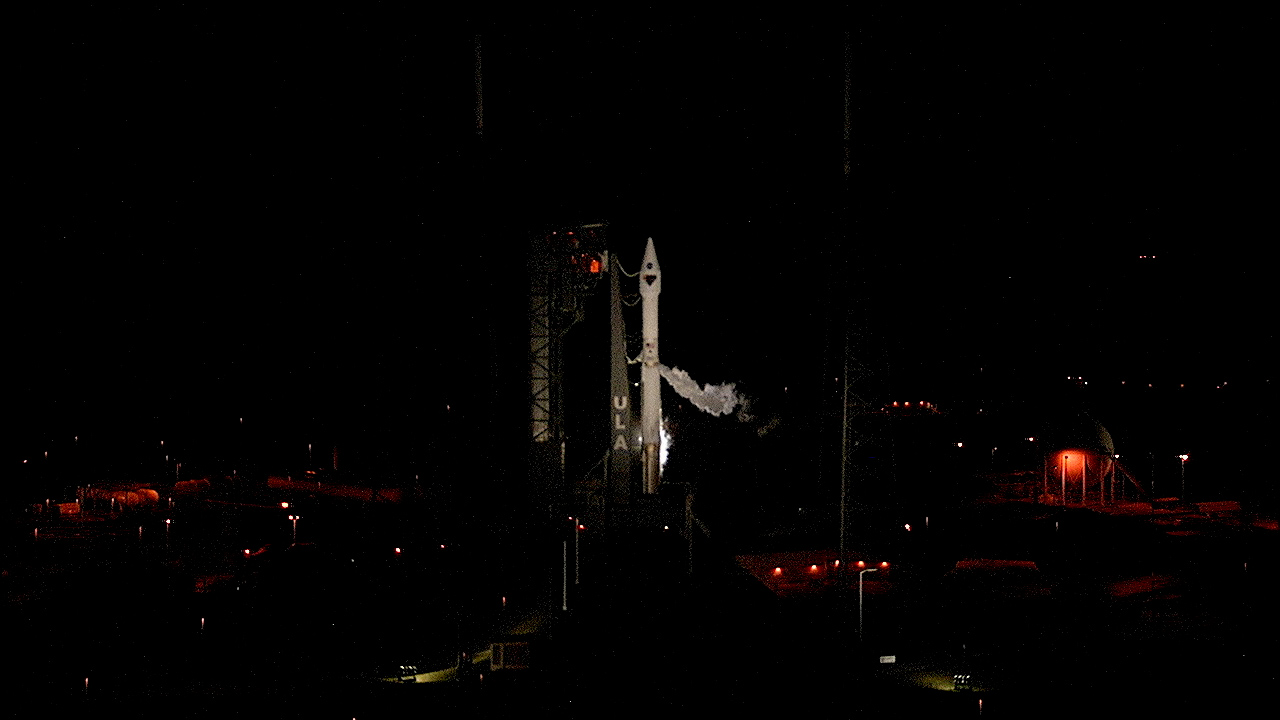
The rocket standing ready on the pad with NASA’s Lucy spacecraft at Space Launch Complex 41 at Cape Canaveral Space Force Station in Florida, is a United Launch Alliance Atlas V 401 configuration. It is the workhorse of the Atlas V fleet, delivering about half of all Atlas V missions to date. The 401 designation means this rocket has a payload fairing, or nose cone, that is approximately four meters wide, a common core booster with no solid rocket boosters, and a Centaur upper stage with a single engine.
This is the 81st mission of an Atlas rocket, and the 100th mission from SLC-41.
Booster propulsion is provided by the RD-180 engine system, a single engine with two thrust chambers. The RD-180 burns Rocket Propellant-1 (RP-1), a highly purified kerosene, along with liquid oxygen, providing 860,200 pounds of thrust at liftoff. Tanking began this morning at 3.
The booster is controlled by the Centaur second stage avionics system, which provides guidance, flight control and vehicle sequencing functions during the booster and Centaur phases of flight. The single-engine Centaur upper stage is a cryogenic vehicle, fueled with liquid hydrogen and liquid oxygen. The two-piece payload fairing that protects the Lucy spacecraft tops the vehicle.
Stay tuned here for launch countdown coverage and at www.nasa.gov/live beginning at 5 a.m. EDT.
Weather Looks Good, Lucy on Track for Launch Oct. 16
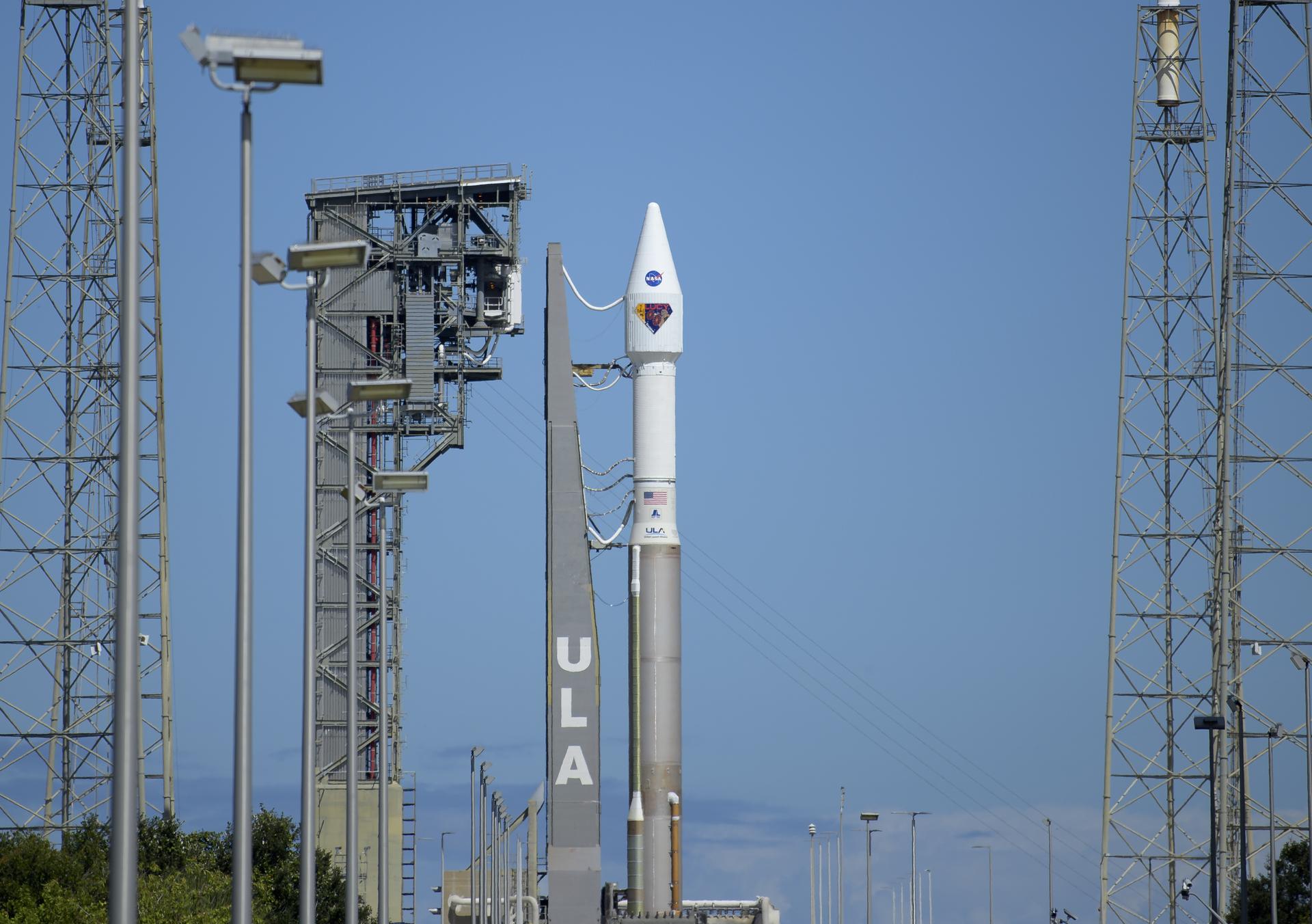
Launch of the United Launch Alliance Atlas V 401 rocket with NASA’s Lucy spacecraft is on track for Oct. 16, 2021 at 5:34 a.m. EDT, from Space Launch Complex 41 at Cape Canaveral Space Force Station in Florida. NASA’s Launch Services Program, based at Kennedy Space Center, America’s premier multi-user spaceport, is managing the launch.
Weather officers with the 45th Weather Squadron, Space Launch Delta 45, at the Cape, continue to predict a 90% chance of favorable weather conditions at the launch pad for liftoff. The primary weather concern is the cumulus cloud rule.
During it’s 12-year primary mission, Lucy will explore a record-breaking number of asteroids, including a flyby of one asteroid in the solar system’s main belt and seven Trojan asteroids near Jupiter. Lucy’s path will circle back to Earth three times for gravity assists, making it the first spacecraft to return to the vicinity of Earth from the outer solar system.
Lucy’s principal investigator is based out of the Boulder, Colorado, branch of Southwest Research Institute (SwRI), which is headquartered in San Antonio. NASA Goddard Space Flight Center in Greenbelt, Maryland, provides overall mission management, systems engineering, plus safety and mission assurance. Lockheed Martin Space in Littleton, Colorado, built the spacecraft. Lucy is the 13th mission in NASA’s Discovery Program. NASA’s Marshall Space Flight Center in Huntsville, Alabama, manages the Discovery Program for the agency’s Science Mission Directorate in Washington, D.C.
Live launch countdown and launch broadcast will begin Oct. 16, at 5 a.m. on NASA Television and the agency’s website, as well as YouTube, Twitter, Facebook, LinkedIn, Twitch, Daily Motion, Theta.TV and NASA’s App. Follow along on the Lucy blog.
For more information about Lucy, visit: https://www.nasa.gov/lucy and http://lucy.swri.edu/.
Launch Readiness Review Completed for NASA’s Lucy Mission
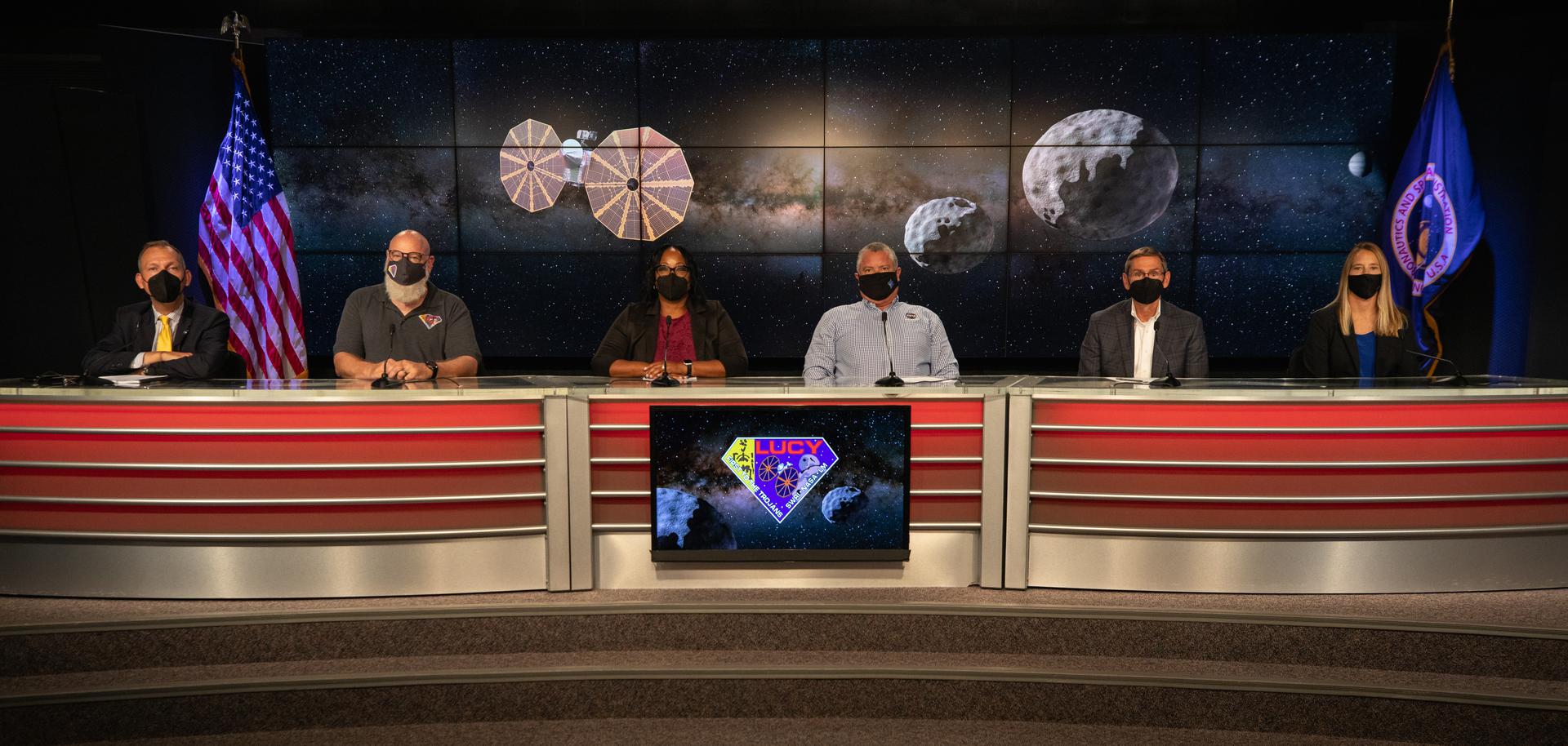
Teams gathered to hear presentations from key mission managers as part of an in-depth assessment on the launch readiness of the ULA Atlas V 401 rocket, mission operations, support functions, and the readiness of the Lucy team to support the launch.
After the launch director polled each partner, it was determined that Lucy was ready to launch.
Following the LRR, mission managers with NASA and United Launch Alliance (ULA) shared their excitement and answered questions about the agency’s Lucy mission during a prelaunch news conference today at Kennedy Space Center in Florida.
Updates on the mission were provided by Thomas Zurbuchen, associate administrator, NASA’s Science Mission Directorate, along with Omar Baez, Lucy launch director, NASA’s Launch Services Program (LSP), and John Elbon, chief operating officer, ULA.
“At the heart of Lucy is the science and how it’s going to talk to us about the Trojans,” Zurbuchen said. “I keep thinking about these millions of pieces out there that we haven’t observed and how it’s so important to go observe them because just like so many of these small worlds, these asteroids that tell us about a chapter of our own story, our own history, in this case, the history perhaps 4 billion years ago or so when the outer planets were forming in the solar system.”
”LSP is excited about the launch of Lucy this Saturday,” Baez said. “Our team is ready, and we look forward to a beautiful launch.”
Also participating were Hal Levison, Lucy principal investigator, Southwest Research Institute, and Donya Douglas-Bradshaw, Lucy project manager at NASA’s Goddard Space Flight Center.
“This team has put in so much work in to building a spacecraft that is truly a work of art,” Douglas-Bradshaw said. “It took a team of more than 500 engineers, scientists, and business folks to conceptualize and build the spacecraft that’s going to achieve this amazing science.”
Lucy is scheduled to launch no earlier than 5:34 a.m. EDT Saturday, Oct. 16, on a ULA Atlas V 401 rocket from Space Launch Complex 41 at Cape Canaveral Space Force Station in Florida. NASA’s Launch Services Program, based at Kennedy Space Center, America’s premier multi-user spaceport, is managing the launch.
According to Jessica Williams, launch weather officer with the 45th Weather Squadron, Space Launch Delta 45 at the Cape, launch of the Lucy spacecraft is 90 percent “go,” with only a 10 percent chance of violating a weather constraint, the cumulus cloud rule.
During its 12-year primary mission, Lucy will explore a record-breaking number of asteroids, including a flyby of one asteroid in the solar system’s main belt and seven Trojan asteroids near Jupiter. Lucy’s path will circle back to Earth three times for gravity assists, making it the first spacecraft to return to the vicinity of Earth from the outer solar system.
Prelaunch Briefings Set for NASA’s Lucy Mission
 NASA will provide coverage of upcoming prelaunch and launch activities for Lucy, the agency’s first mission to explore the Jupiter Trojan asteroids.
NASA will provide coverage of upcoming prelaunch and launch activities for Lucy, the agency’s first mission to explore the Jupiter Trojan asteroids.
Lucy is targeted to launch at 5:34 a.m. EDT Saturday, Oct. 16, on a United Launch Alliance (ULA) Atlas V 401 rocket from Space Launch Complex 41 at Cape Canaveral Space Force Station in Florida. NASA’s Launch Services Program, based at Kennedy Space Center, America’s premier multi-user spaceport, is managing the launch.
Live launch coverage will begin at 5 a.m. EDT on NASA Television, the NASA app, and the agency’s website. NASA will hold a prelaunch briefing Wednesday, Oct. 13, followed by science and engineering briefings Oct. 14.
Over its 12-year primary mission, Lucy will explore a record-breaking number of asteroids. The spacecraft will fly by one asteroid in the solar system’s main belt and seven Trojan asteroids. Lucy’s path will circle back to Earth three times for gravity assists, which will make it the first spacecraft to return to our planet’s vicinity from the outer solar system.
Prelaunch briefings:
Wednesday, Oct. 13
1 p.m.: Lucy prelaunch news conference with the following participants:
- Thomas Zurbuchen, associate administrator, NASA’s Science Mission Directorate at the agency’s Headquarters in Washington.
- Hal Levison, Lucy principal investigator, Southwest Research Institute.
- Donya Douglas-Bradshaw, Lucy project manager at NASA’s Goddard Space Flight Center in Greenbelt, Maryland.
- John Elbon, Chief Operating Officer, United Launch Alliance.
- Jessica Williams, 45th Weather Squadron, Space Launch Delta 45, Cape Canaveral Space Force Station.
- Omar Baez, Lucy Launch Director, NASA’s Launch Services Program at Kennedy Space Center in Florida.
Thursday, Oct. 14
1 p.m.: Lucy science briefing with the following participants:
- Adriana Ocampo, Lucy program executive, NASA Headquarters.
- Cathy Olkin, Lucy deputy principal investigator, Southwest Research Institute.
- Keith Noll, Lucy project scientist, Goddard.
- Hal Weaver, principal investigator for Lucy’s L’LORRI instrument, Johns Hopkins Applied Physics Laboratory.
- Phil Christensen, principal investigator for Lucy’s L’TES instrument, Arizona State University.
- Dennis Reuter, principal investigator for Lucy’s L’Ralph instrument, Goddard.
3 p.m.: Lucy engineering briefing with the following participants:
- Joan Salute, associate director for flight programs, Planetary Science Division, NASA Headquarters.
- Jessica Lounsbury, Lucy project systems engineer, Goddard.
- Katie Oakman, Lucy structures and mechanisms lead, Lockheed Martin Space.
- Coralie Adam, deputy navigation team chief, KinetX Aerospace.
Friday, Oct. 15
3:30 p.m.: NASA Science Live with the following participants:
- Carly Howett, assistant director of the Department of Space Studies, Southwest Research Institute.
- Wil Santiago, deep space exploration engineer, Lockheed Martin Space.
- Donya Douglas-Bradshaw, Lucy project manager, Goddard.
- Brittine Young, mentor for the NASA Lucy L’SPACE academy.
- Wilbert Ruperto, ambassador for the NASA Lucy L’SPACE academy.
This episode will air live on NASA Television at www.nasa.gov/live and stream live on the agency’s Facebook, Twitter and YouTube channels. Members of the public can participate live by sending questions using #askNASA or posting a comment in the live video chat stream.
For more information on Lucy, visit www.nasa.gov/lucy.
Managers Complete Flight Readiness Review for NASA’s Lucy Mission
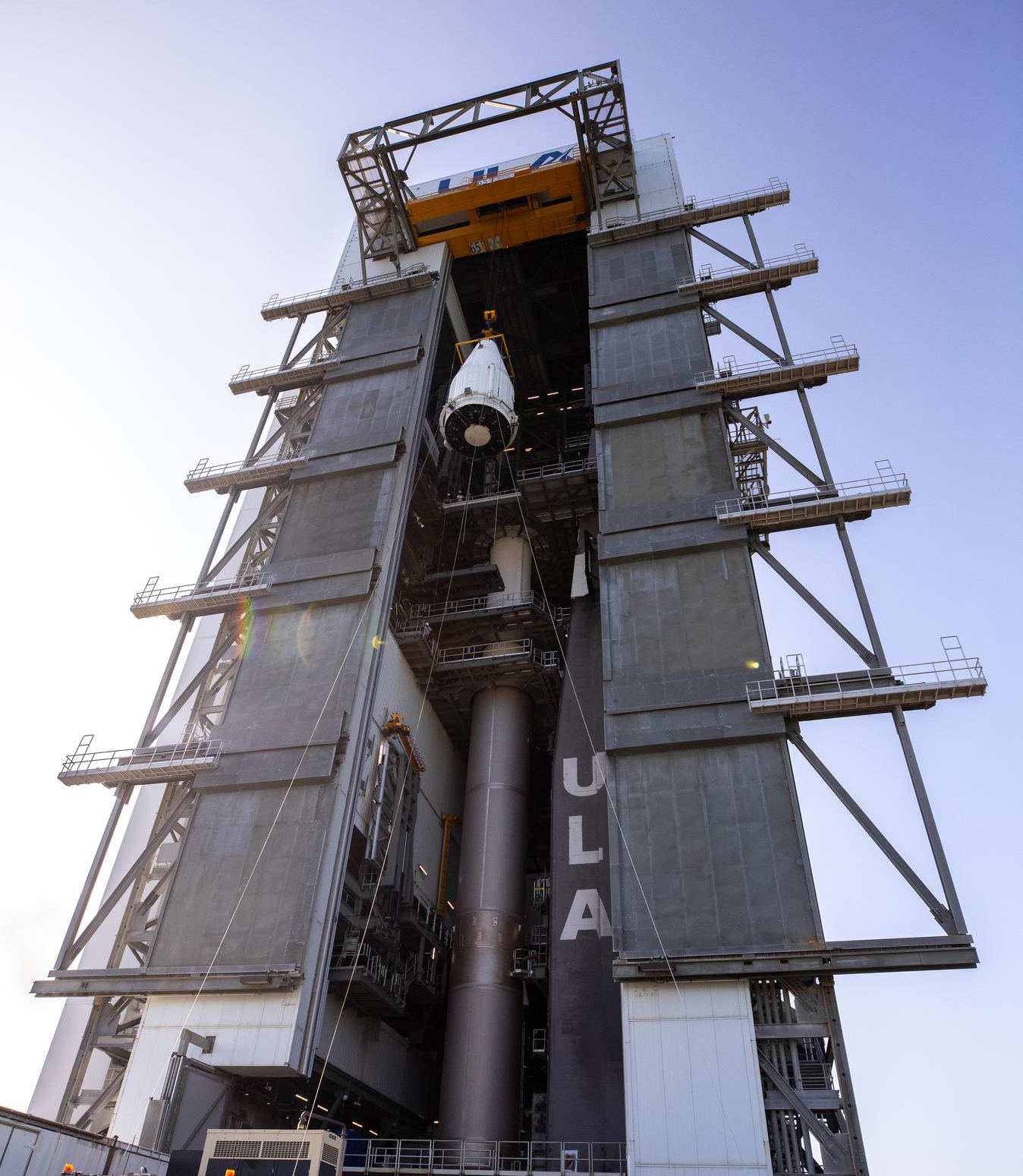
NASA and United Launch Alliance (ULA) managers completed the Flight Readiness Review (FRR) this morning at Kennedy Space Center in Florida for the agency’s Lucy mission. The FRR focuses on the preparedness of NASA, ULA, and the Lucy team to support the flight and the certification of flight readiness. The final step is the Launch Readiness Review, which is scheduled for Wednesday, Oct. 13.
Encapsulated in its payload fairing, the Lucy spacecraft made the trek from the Astrotech Space Operations Facility in Titusville to Space Launch Complex 41 (SLC-41) at Cape Canaveral Space Force Station in Florida. The fairing was lifted high into the Vertical Integration Facility and then lowered and secured onto the Atlas V Centaur second stage early Thursday morning, Oct. 7.
Lucy is scheduled to launch no earlier than 5:34 a.m. EDT Saturday, Oct. 16, on a ULA Atlas V 401 rocket from SLC-41. NASA’s Launch Services Program, based at Kennedy Space Center, America’s premier multi-user spaceport, is managing the launch.
During its 12-year primary mission, Lucy will explore a record-breaking number of asteroids, flying by one asteroid in the solar system’s main belt and seven Trojan asteroids. Additionally, Lucy’s path will circle back to Earth three times for gravity assists, making it the first spacecraft ever to return to the vicinity of Earth from the outer solar system.
Lucy’s principal investigator is based out of the Boulder, Colorado, branch of Southwest Research Institute (SwRI), which is headquartered in San Antonio. NASA’s Goddard Space Flight Center in Greenbelt, Maryland, provides overall mission management, systems engineering, plus safety and mission assurance. Lockheed Martin Space in Littleton, Colorado, built the spacecraft. Lucy is the 13th mission in NASA’s Discovery Program. NASA’s Marshall Space Flight Center in Huntsville, Alabama, manages the Discovery Program for the agency’s Science Mission Directorate in Washington, D.C.
For more information about Lucy, visit www.nasa.gov/lucy.
NASA’s Lucy Spacecraft Secured Inside Payload Fairing
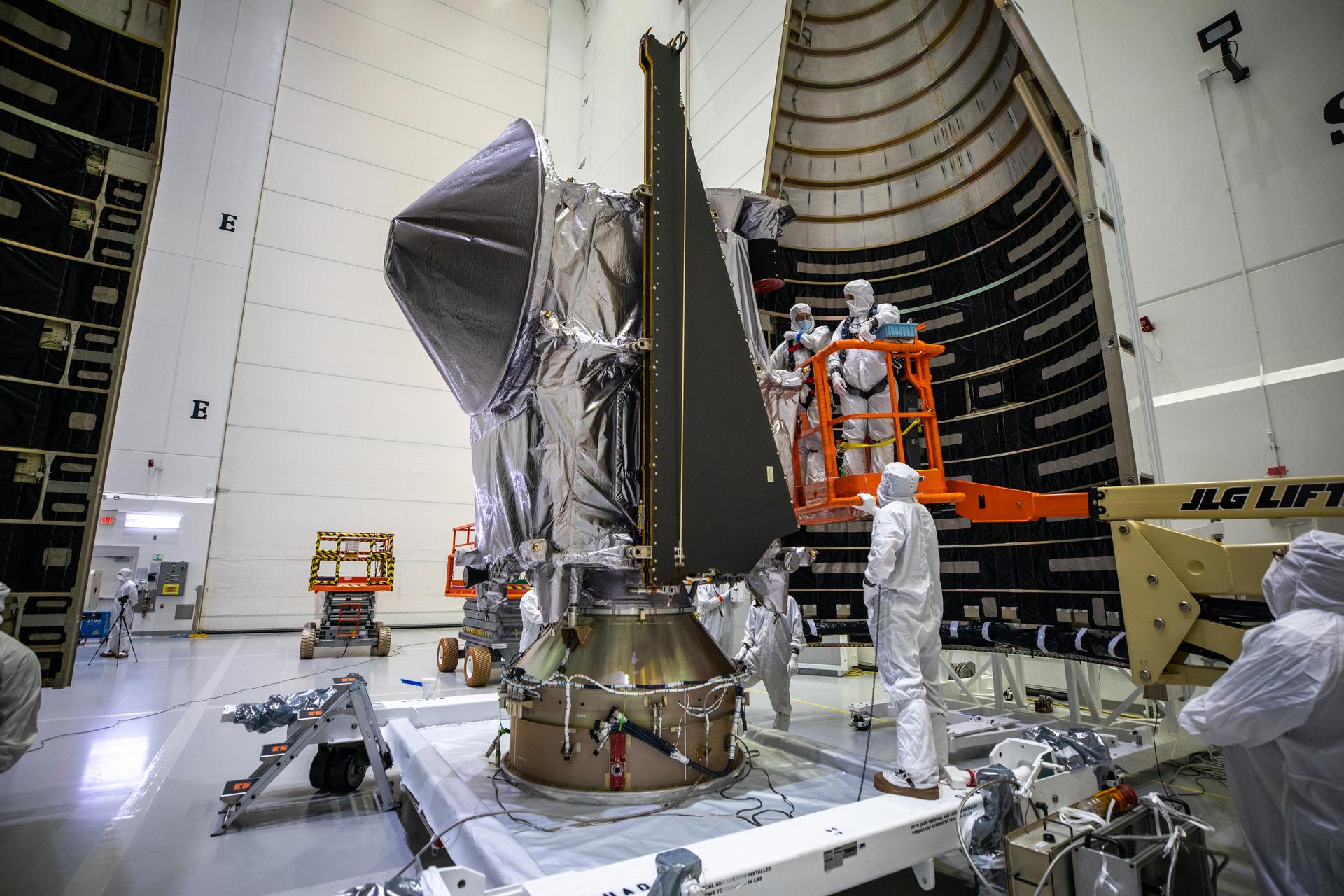
United Launch Alliance (ULA) has completed encapsulation of the payload fairing around NASA’s Lucy spacecraft inside the Astrotech Space Operations Facility in Titusville, Florida. The payload fairing secures and protects the spacecraft during launch and ascent.
Up next, the payload fairing will be transported to Space Launch Complex 41 (SLC-41) at Cape Canaveral Space Force Station and hoisted up into the Vertical Integration Facility for mating to the Centaur stage.
Lucy is scheduled to launch at 5:34 a.m. EDT on Saturday, Oct. 16, 2021, atop a ULA Atlas V 401 rocket from SLC-41. NASA’s Launch Services Program, based at Kennedy Space Center, America’s premier multi-user spaceport, is managing the launch.
Over its 12-year primary mission, Lucy will explore a record-breaking number of asteroids, flying by one asteroid in the solar system’s main belt and seven Trojan asteroids around Jupiter. Additionally, Lucy’s path will circle back to Earth three times for gravity assists, making it the first spacecraft to return to the vicinity of Earth from the outer solar system.
For more information about Lucy, visit: https://www.nasa.gov/lucy and http://lucy.swri.edu.
